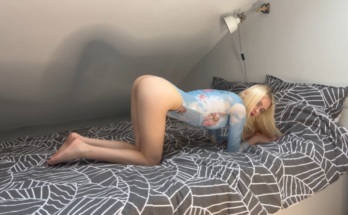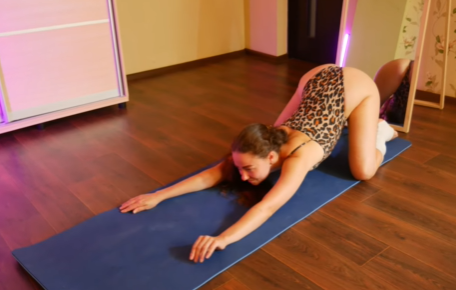
Your legs carry you through every step, stride, and leap in life. They’re the foundation of movement, strength, and stability — yet they’re often the first part of the body to grow tight, stiff, or fatigued. Long hours of sitting, intense exercise, or even daily standing can shorten muscles and restrict range of motion. That’s where a Stretch Release for Leg Mobility routine comes in — a mindful flow designed to loosen, lengthen, and rejuvenate your lower body.
This full-length 1000-word guide will take you through a complete leg mobility session — blending deep stretches, active movement, and breathwork to restore flexibility and freedom in your hips, hamstrings, calves, and thighs.
Why Leg Mobility Matters
Mobility is more than flexibility — it’s about how freely your joints move through their natural range. Strong yet mobile legs improve posture, reduce pain, and enhance balance. Whether you’re walking, running, dancing, or practicing yoga, leg mobility ensures your body moves smoothly and efficiently.
When leg muscles — especially the hamstrings, hip flexors, and calves — tighten up, they can pull on surrounding joints and affect your entire body alignment. Tight hips can strain your lower back; tight calves can affect your gait and ankle health. A mobility-focused stretch routine targets these areas, helping you move better, recover faster, and prevent injuries.
The beauty of stretch release is that it combines physical relief with mental calmness. As you breathe and lengthen your muscles, you release not just tension, but also stored stress. It’s therapy for both the body and mind.
Preparing for Your Practice
Find a quiet space with enough room to move freely. You’ll need a yoga mat or soft surface, and optionally, a strap or towel for deeper stretches.
Before diving into the stretches, take a few deep breaths. Inhale through your nose, exhale through your mouth. Let your body settle and your mind focus. Feel gratitude for the movement you’re about to create.
Warm-Up (5–7 minutes)
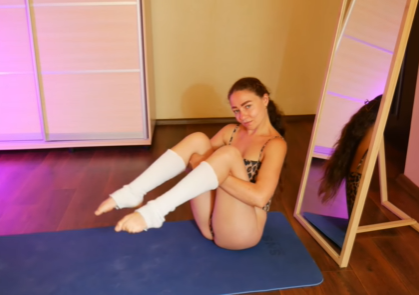
A good warm-up prepares your muscles and joints for deeper stretching. It helps prevent injury and makes your mobility work more effective.
1. March in Place (1 minute)
Start standing tall. Gently lift your knees one at a time, swinging your arms naturally. This increases blood flow and wakes up your legs.
2. Hip Circles (1–2 minutes)
Place your hands on your hips and make big circles with your hips — first clockwise, then counterclockwise. Keep your core engaged as you move. This loosens the hip joints and lower back.
3. Leg Swings (2 minutes)
Hold onto a wall or sturdy surface. Swing your right leg forward and backward in a controlled motion, keeping your torso stable. Do 10–15 swings, then switch sides. Repeat side-to-side leg swings for both legs.
4. Ankle Rotations (1 minute)
Lift one foot and rotate the ankle slowly in both directions. Repeat on the other side. Strong, mobile ankles are key to stable and fluid leg movement.
Main Flow: Stretch Release for Leg Mobility (25–30 minutes)
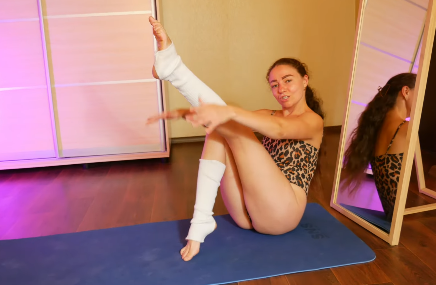
Now that your body is warm, we’ll move into deeper stretches and dynamic movements to release tightness and restore mobility throughout your legs.
1. Forward Fold (Uttanasana)
Stand with your feet hip-width apart. Inhale deeply to lengthen your spine, then exhale and fold forward, letting your head and arms hang heavy. Bend your knees slightly if your hamstrings are tight.
Hold for 5–8 breaths, allowing gravity to gently stretch your hamstrings and calves. Each exhale helps release a bit more tension.
2. Low Lunge (Anjaneyasana)
Step your right foot forward into a lunge position, with your left knee resting on the mat. Keep your front knee above your ankle.
- Inhale, lift your chest and reach your arms overhead.
- Exhale, sink your hips forward to feel a stretch in your hip flexors and quadriceps.
Stay for 6–8 breaths, then switch sides. This pose deeply opens the front of the thighs and hips, improving mobility for walking and running.
3. Half Split (Ardha Hanumanasana)
From the lunge, shift your hips back and straighten your front leg. Flex your toes toward your face and lengthen your spine forward.
Feel the stretch along your hamstrings and calves. Breathe slowly, deepening the stretch on each exhale.
Hold for 8–10 breaths before switching sides.
4. Seated Wide-Leg Forward Fold (Upavistha Konasana)
Sit down with your legs extended wide apart in a V shape.
- Flex your toes up to engage your legs.
- Inhale, lengthen your spine; exhale, fold forward gently, walking your hands out in front of you.
Stay for 10 slow breaths. This pose opens your inner thighs (adductors) and stretches your hamstrings. Try not to round your back — focus on length rather than depth.
5. Reclined Figure-Four Stretch

Lie on your back with your knees bent. Cross your right ankle over your left thigh, forming a “4” shape.
- Thread your right hand through the gap between your legs and clasp your hands behind your left thigh.
- Gently pull your legs toward your chest to stretch the outer hip and glute.
Hold for 10 breaths and switch sides. This stretch relieves hip tension that often limits leg movement.
6. Butterfly Stretch (Baddha Konasana)
Sit tall and bring the soles of your feet together. Hold your feet with your hands, letting your knees fall open to the sides.
- Inhale to lengthen your spine; exhale to fold slightly forward.
- You can gently press your knees toward the ground for a deeper stretch.
Stay for 10–12 breaths. This pose opens the hips and inner thighs — two key areas for leg mobility.
7. Standing Quad Stretch
Stand tall and grab your right ankle with your right hand, bringing your heel toward your glute.
- Keep your knees close together and your core engaged.
- Gently press your hip forward to feel a stretch in your quadriceps.
Hold for 30 seconds, switch sides, and repeat. This improves flexibility in the front of your thighs and supports knee mobility.
8. Calf Stretch (Downward Dog Variation)
Move into Downward Facing Dog, pressing your hands and feet into the mat.
- Pedal your feet — bend one knee while straightening the other — to stretch your calves alternately.
- After several breaths, press both heels toward the floor for a deeper stretch.
Strong, flexible calves improve ankle movement and balance.
9. Deep Squat Hold (Malasana)
Stand with feet slightly wider than hips, toes turned out. Lower into a deep squat, keeping your heels grounded if possible.
- Bring your palms together at your chest and use your elbows to gently press your knees outward.
- Keep your chest lifted and spine straight.
Hold for 8–10 breaths. This pose opens your hips, ankles, and inner thighs, enhancing lower-body mobility and stability.
10. Supine Hamstring Stretch (with Strap or Towel)
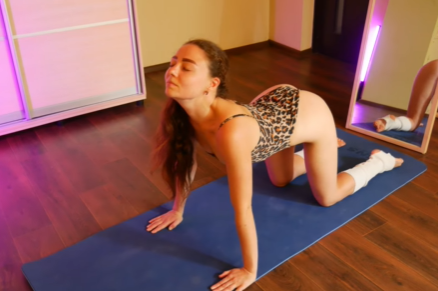
Lie on your back and loop a strap around the ball of your right foot. Extend your leg toward the ceiling while keeping the other leg flat on the mat.
- Hold the strap with both hands and gently draw your leg closer to your torso.
- Keep your leg as straight as possible without locking the knee.
Hold for 10 breaths per side. This stretch lengthens your hamstrings and releases tightness that limits leg movement.
Cool Down & Release (5–8 minutes)
End your session by soothing your muscles and grounding your energy.
1. Supine Twist (2 minutes per side)
Lie on your back and draw your right knee across your body. Extend your right arm to the side and look toward it.
Breathe deeply to release your spine, hips, and lower back.
2. Legs-Up-the-Wall (Viparita Karani) (3–5 minutes)
Lie on your back and rest your legs up a wall. Close your eyes, relax your arms, and breathe slowly.
This gentle inversion improves blood circulation, reduces swelling, and calms your nervous system.
Tips for Success
- Be consistent.
Practice this flow 3–5 times per week for lasting improvement in flexibility and comfort. - Move slowly and breathe.
Let your breath guide each movement. Inhale to lengthen, exhale to soften and release. - Avoid pushing or bouncing.
Ease gently into each stretch. Mobility comes from patience, not force. - Warm up before deep stretches.
Never stretch cold muscles — dynamic movements first make your practice safer. - Listen to your body.
Pain means stop; mild discomfort is where transformation happens.
Conclusion
Your legs are powerful, resilient, and deserving of care. This Stretch Release for Leg Mobility routine gives them the attention they need — restoring flexibility, reducing stiffness, and reigniting freedom in your movement.
Over time, you’ll notice your stride becoming smoother, your balance more stable, and your body more aligned. But beyond the physical benefits, this practice reconnects you with your breath and your awareness. Each stretch becomes a moment of mindfulness — a reminder that movement is not just about motion, but about presence.
Through consistent practice, you’ll unlock your body’s natural mobility and rediscover the joy of effortless movement — walking, running, and living with grace, lightness, and strength.


